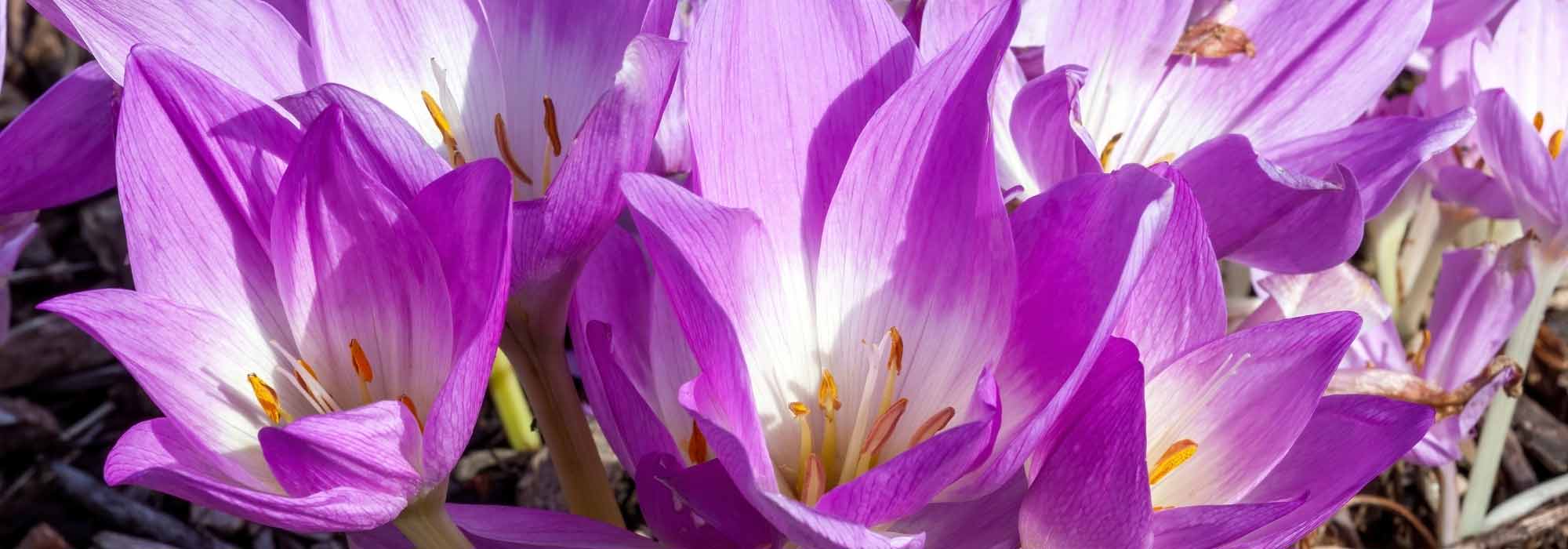
7 toxic bulbs
Beware of these plants that can be harmful to health.
Contents
Colchicum, tulip, daffodil, hyacinth… these plants share the trait of being bulbous, offering their lovely flowers in various seasons. But they also have another commonality, much less charming: their toxicity. Potentially fatal for some, causing discomfort and other unpleasant symptoms for others, beware of these bulbous plants, which can be truly dangerous for the health of the unwary.
Let’s take a look at these 7 toxic bulbs in the garden, including their descriptions, the parts containing harmful substances, and the risks involved in case of ingestion.
And for further reading, visit the dedicated site of the ANSES (National Agency for Food, Environmental and Occupational Health Safety) which gathers information about toxic plants: plantes-risque.info
Colchicum
The colchicum or Colchicum autumnale is a bulbous plant that brightens autumn with its elegant flowers in shades of pink, mauve, or white, marking the end of summer. Also known as autumn colchicum, autumn crocus, meadow saffron, or wild saffron, but also “dog killer,” the colchicum is deadly if ingested. All varieties are toxic, and it is also a lethal plant for animals.
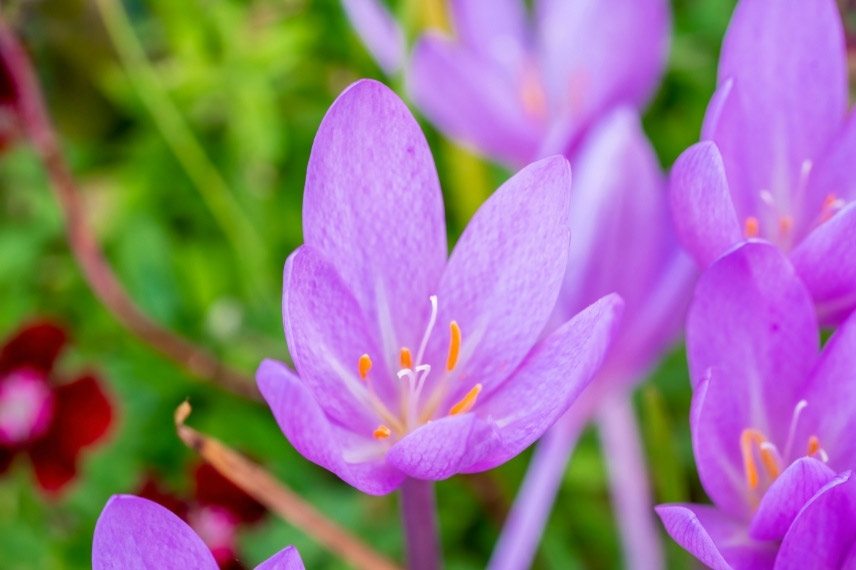
Colchicum flower
Active principles, toxic parts, and effects
All parts of the colchicum are toxic: the leaves, flowers, seeds, and roots. Indeed, it produces colchicine, a highly toxic alkaloid that has, among other things, mutagenic properties.
In case of ingestion, the clinical signs or symptoms that may be observed are intense digestive disorders: very painful stomach aches, vomiting, and abundant, persistent diarrhoea that can lead to severe dehydration. This dehydration results in a significant drop in blood pressure with a risk of cardio-respiratory arrest. Other serious disorders such as liver damage and blood cell impairment may occur subsequently. Death can occur up to 10 days after ingestion of the plant.
Daffodil and Jonquil
The Daffodils or Jonquils (which is a vernacular name for plants of the genus Narcissus) are well-known bulbous plants that brighten spring with their white, yellow, or orange flowers depending on the species. However, when approached too closely, their strong scent can sometimes cause headaches. Knowing that their name contains a Greek root meaning “to be numb,” one might suspect the narcotic properties of the genus Narcissus.

Jonquil flowers
Active Principles, Toxic Parts, and Effects
Daffodils contain lycorine, a toxic alkaloid that, if ingested, causes vomiting, stomach pain, and diarrhoea. In rare cases, this ingestion can lead to fatal nerve accidents.
The bulb is highly toxic, but the flowers, leaves, and stems are also toxic. Generally, poisoning often results from the ingestion of daffodil bulbs mistaken for onions. Frequent handling of the bulbs and flowers can sometimes cause skin conditions. One should avoid ingesting the green leaves, sucking on the stems, or drinking the water in which cut flowers or bulbs have been soaked.
Animals are also affected by the toxicity of Narcissus: the lethal dose for a dog would be 15 g of bulbs.
Discover other Spring bulbs
View all →Available in 1 sizes
Available in 1 sizes
Available in 1 sizes
Available in 1 sizes
Available in 1 sizes
Available in 1 sizes
Available in 1 sizes
Available in 1 sizes
Available in 1 sizes
Available in 1 sizes
Snowdrop
Snowdrops or Galanthus are charming and delicate little bulbous plants that bloom with a multitude of white flowers maculate with green in winter; for this reason, they have the ability to pierce a thin layer of snow, hence their common name.
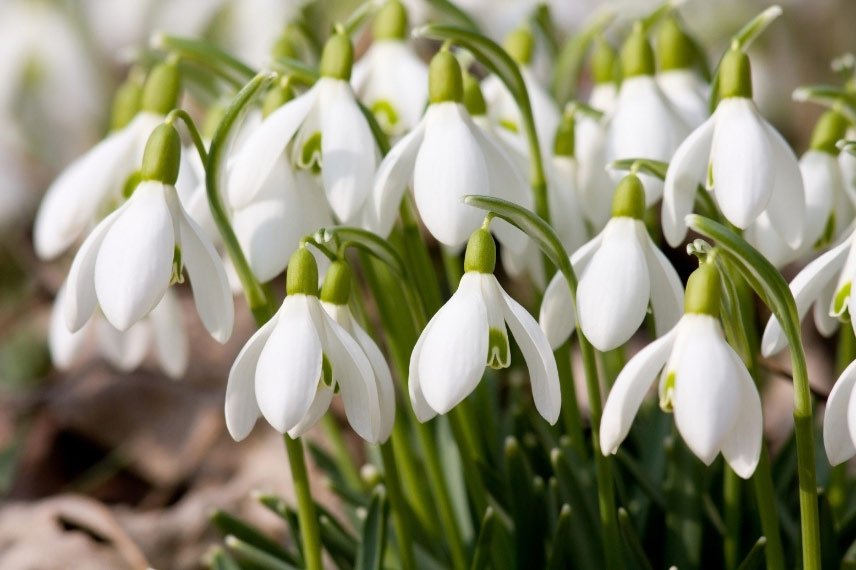
Snowdrop flowers
Active principles, toxic parts and effects
All parts of the plant, especially the bulbs, contain toxic alkaloids.
After ingestion of a small amount of leaves, flowers, or bulbs, gastrointestinal and intestinal problems are observed, accompanied by vomiting. These are accompanied by abdominal pain, diarrhoea, and hypersalivation. Ingesting a significant amount of bulbs can also cause circulatory disturbances and drowsiness. This plant is also toxic to animals.
Read also
8 toxic perennialsHyacinth
The Hyacinths or Hyacinthus enjoy enduring popularity among gardeners thanks to their early flowering (from February), delightfully fragrant and colourful. They can be planted in the garden as well as indoors for Christmas period blooms.
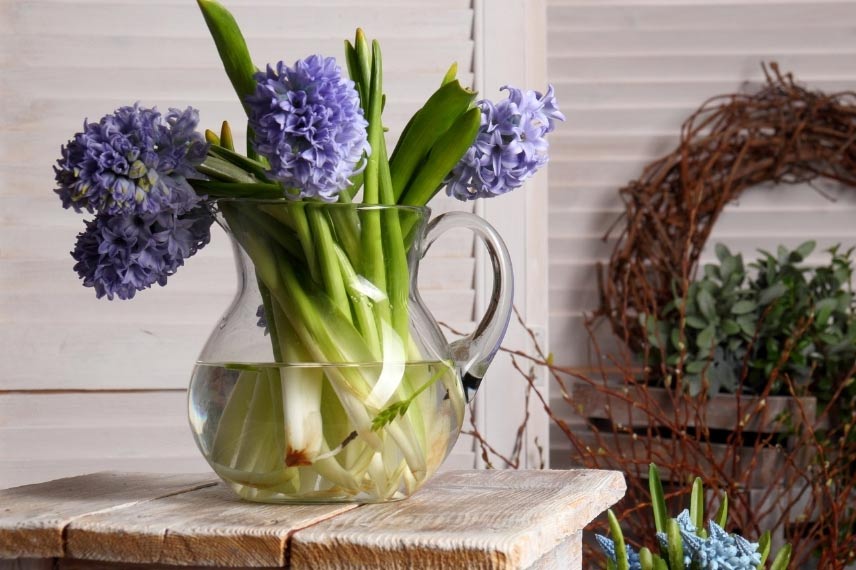
Hyacinth flower
Active principles, toxic parts, and effects
The toxicity of Hyacinths primarily comes from the bulbs, which contain toxic and allergenic compounds.
The Hyacinth is toxic if ingested. The flowers and leaves can cause vomiting, and the bulb, even when ingested in small amounts, quickly leads to intestinal disturbances such as severe gastric pain, nausea, and vomiting, sometimes resulting in hospitalisation when these disturbances are severe.
Tulip
The Tulips belong to the genus Tulipa, which comprises around a hundred species that have given rise to several thousand varieties. With single, double, early, or late flowers, there is something for everyone, and they are irreplaceable in the garden. However, their beauty can conceal harmful properties for health.
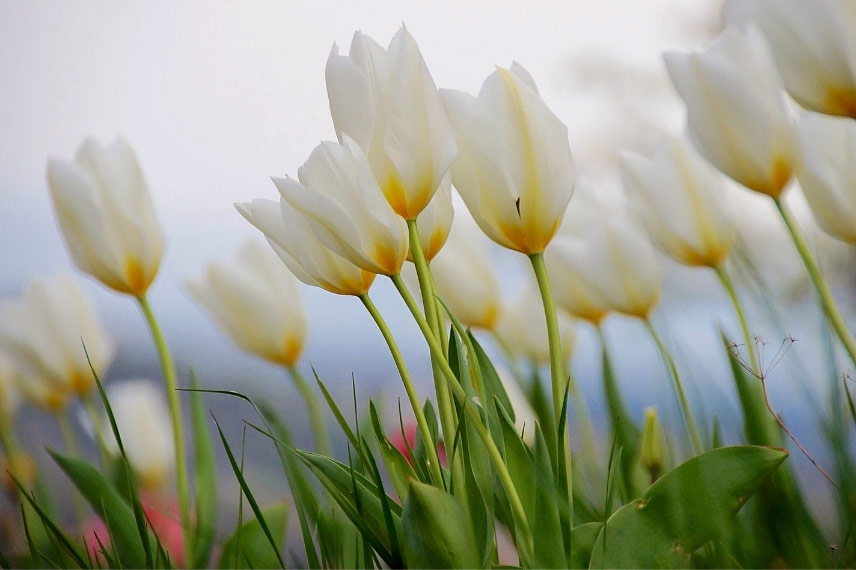
Tulip flowers
Active principles, toxic parts, and effects
It is the entire plant, including the bulb, stem, leaves, and flowers, that contains toxic substances known as tulipalin. The bulb contains the highest concentration of these substances.
In small doses, these substances cause stomach aches. In larger doses, more severe symptoms are experienced, such as dizziness, vomiting, diarrhoea, and intense abdominal pain. Much more rarely, in cases of severe poisoning, ingestion of tulips can lead to convulsions, coma, and then death.
Lily
Lilies are herbaceous bulbous plants belonging to the genus Lilium. They produce magnificent and majestic floral stems in various shades during summer. A symbol of refinement and purity, the lily can, however, be deleterious to health if consumed. Dangerous for humans, it is especially fatal for cats.
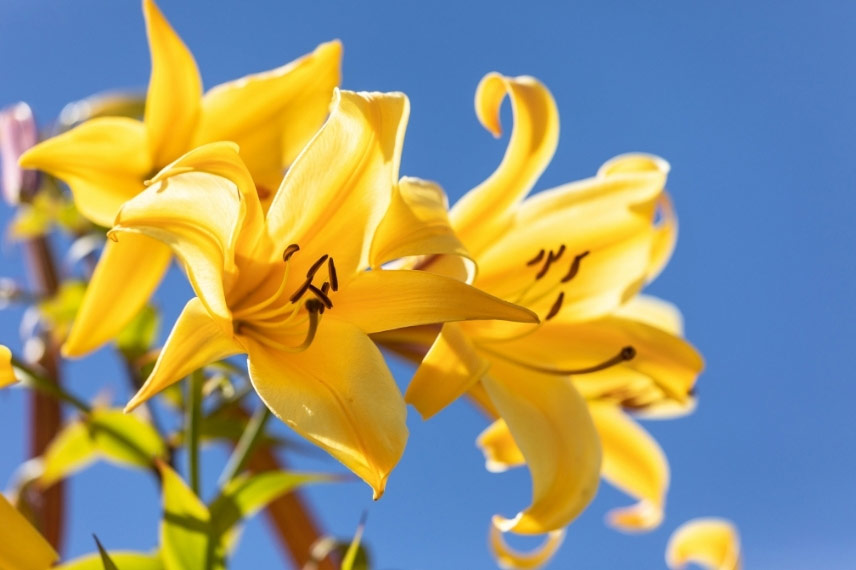
Lily flowers
Active principles, toxic parts, and effects
Lilies are highly toxic due to an alkaloid found in the bulbs and stems: lycorine. Symptoms of poisoning manifest as abdominal pain, excessive salivation, nausea, vomiting, and diarrhoea.
The cat is the main species affected, as this plant particularly attracts them, and they tend to nibble on the leaves or stem, but lilies are also dangerous for dogs. The entire plant is toxic, and ingesting just one leaf can be fatal for cats.
Gladiolus
Whether it be the hybrid gladioli with their large, colourful flower spikes or their botanical cousins Gladiolus callianthus and Byzantine gladiolus, which are smaller and have a more natural appearance, these are elegant and majestic bulbous plants that delight gardeners. However, this delight should be purely visual, as gladioli are among the toxic plants that should not be ingested and should be handled with care.
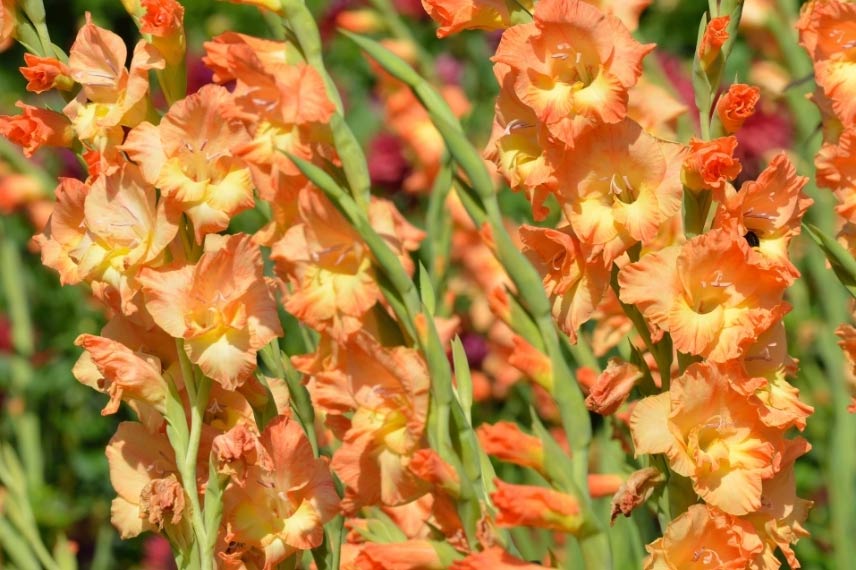
Gladiolus flowers
Active principles, toxic parts, and effects
Although it is relatively harmless, the toxicity of the gladiolus is nonetheless very real. If ingested, it can cause vomiting and diarrhoea.
Contact with the sap may lead to irritation and hives in some individuals, particularly children. Therefore, handling them should preferably be done with gloves.
How to prevent the risks of poisoning
To prevent the risk of poisoning from these bulbs, it is advisable to:
- of course, not ingest the mentioned plants
- primarily admire them and only touch them when necessary (cleaning, weeding, etc.). In this case, it is strongly recommended to wear gloves when gardening among these bulb plants and to wash your hands or any other part of your body after contact. Avoid bringing your hands to your face.
- if you choose to grow some of these toxic plants in the garden, plant them out of reach of children and pets
- make children and anyone unaware aware of the potential dangers of these plants.
What to do in case of poisoning or contact?
- In case of severe distress or life-threatening situations, call 15 or 112
- In all other cases, even in the absence of symptoms or if an abnormal skin reaction occurs, seek advice from a poison control centre or a doctor
- If a child or adult has put leaves or berries known to be toxic or other ornamental plants in their mouth: clean their mouth with a damp cloth, do not make them drink, and call a Poison Control Centre
- In case of ingestion by an animal, contact a veterinary poison control centre
- Subscribe!
- Contents
































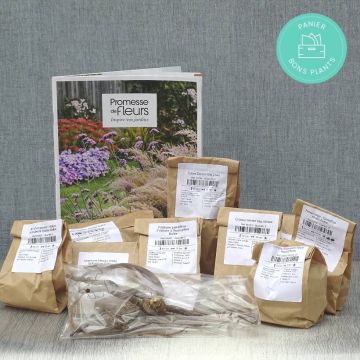
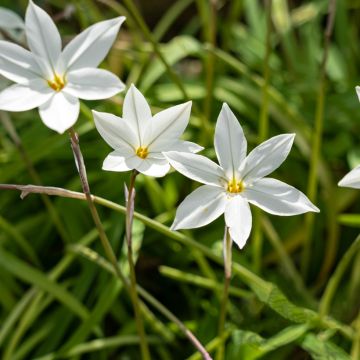


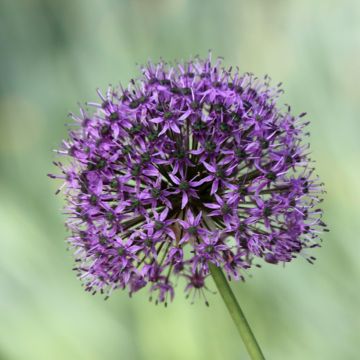

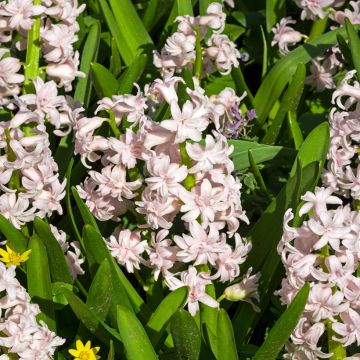
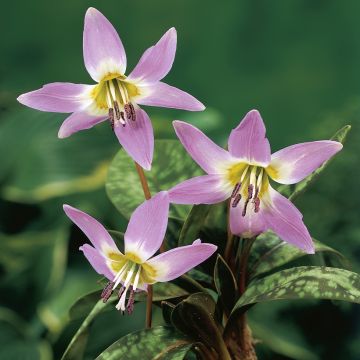
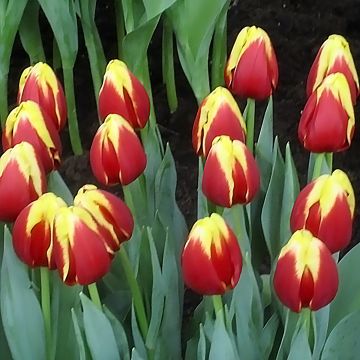
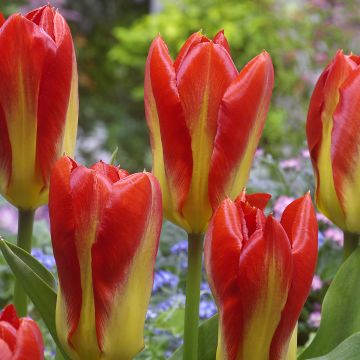
Comments